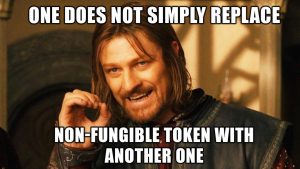By Brian Nguyen
With the massive surge of NFT blockchain drives in the digital art auction world, recent sales have kicked the crypto art market doors wide open and become highly publicised. The rise of the internet meant that images, videos and songs could be reproduced infinitely anywhere online, without any royalties being paid to their creators. Collectible items have been migrating to digital space in the form of Non-Fungible Tokens (NFTs), claiming that the problems of digital ownership and authorship will be addressed through blockchain records. This type of digital asset prevents unlimited reproduction of the token while also enabling creators to reap future financial rewards. Unlike currencies or Bitcoin, where every token is of equal value and can be swapped for another, NFTs have unique qualities which prevents them from being ‘fungible,’ allowing artists to generate the token supply.

Recently, the star of this virtual gold rush has been a graphic designer named Mike Winkelmann, better known as Beeple. With the sale of Beeple’s $69 million Everyday NFT, I find it really exciting that people are taking the idea of digital art more seriously and seeing its potential value, especially now when artists are stuck at home constantly working. Although many might find his work offensive, he does a great job of integrating important social matters and a bit of inappropriate imagery to make his pieces stand out.
NFTs aren’t really that absurd when compared to physical artworks—which have always been auction fodder for the rich. Even though NFTs are completely digital, people will find worth in the idea that they are on the record for “owning” a unique crypto token that can verify their purchase. NFTs are facilitating a valuation of digital art no different than traditional physical art objects, since people can technically “own” them by reproducing them or taking a photo of it. It’s a great concept for artists as it gives clients an incentive to support them, by buying more of their work the more value the NFTs will have. In the event that an NFT is resold, the original artist will also be able to receive a percentage of the final sale.
However, after looking at the amount of mining and fuel it takes to build and calculate these blockchains, we might expect environmental concerns to bring massive attention of the unwanted variety to NFTs. While I believe that there is some cultural value for art collectors, spectators or even investors, my current stance is that I do not believe NFTs to be worth damaging the environment in the name of “non objects.”
